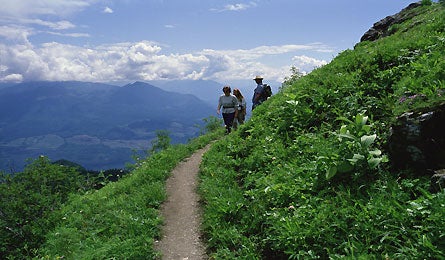Cascades Meltdown

'North Cascades, Washington State Tourism'
Looming above the Pacific Northwest’s plunging waterfalls and ancient forests is something even rarer: a vast collection of glaciers. Seventy percent of the Lower 48’s glaciers are in the North Cascades and Olympics. Mt. Rainier, with year-round snow and ice, supports the largest concentration of glaciers on a single peak outside of Alaska. But recent studies indicate that lower-elevation ice, and the potential for July snowball fights, will soon diminish on these mountains.
For most of the last century, the glaciers in the Pacific Northwest have been in full-scale retreat. Between 1913 and 1994, Rainier lost a quarter of its glacial volume, and satellite mapping in 2002 showed some of its biggest glaciers–the Nisqually, Winthrop, South Tahoma, and Carbon–at or near their historic minimums. Seven of Mt. Hood’s 11 glaciers have shrunk an average of 34 percent since 1900, while in North Cascades National Park, ice sheets have decreased in size by 13 percent since 1971.
The region’s glaciers will continue to melt as the climate heats up. Scientists with the University of Washington’s Climate Impacts Group predict that the Northwest will warm about 1°F in the next 20 years–nearly as much as it did in the past century. Most vulnerable are the small glaciers (250 acres and smaller) that make up almost half of the region’s ice sheets. Only those at the highest elevations will outlast the century.
This widespread retreat also impacts the appearance and accessibility of mountains. Andrew Fountain, a climate researcher at Portland State University, predicts that the snowy slopes of Mt. Hood will become drier and less vegetated, much like California’s Mt. Lassen, within 50 years. Likewise, retreating glaciers and disappearing snow have already exposed more rock on Rainier’s summer climbing routes, says Mike Gauthier, the peak’s lead climbing ranger. Less snow means tougher footing, more rockfall hazards–and less climbing appeal. “For me, the whole area will become a lot less interesting,” says Fountain. “You’re losing one of the most attractive features of hiking in the Northwest, its snow and ice.”